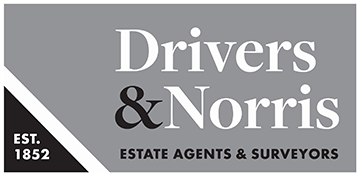
The price of an average UK home fell by a further 1.5% in December as the rate of annual growth slowed in all nations and regions during the month, according to this morning's data from Halifax. A typical UK property now costs £281,272 - down from £285,425 in November.
On an annual basis, the North East saw the greatest slowdown in growth, with annual house prices rising by +6.5%, compared to +10.5% the prior month. Average house prices in the region are now £169,980.
Eastern England, West Midlands and Wales experienced the smallest falls in growth rate. Those buying in the East of England will now pay an average £337,215 (growth rate +5.5% vs +7.2% in November), while in the West Midlands average properties now cost £250,965 (growth rate +7.3% vs +9.1% in November). The average home in Wales is now £217,547, with annual growth now +6.1% (down from +7.7% the prior month).
Those buying in Scotland will find an average home now costs £200,166, with the second greatest slowdown in the annual growth in the UK, now +3.5% (from +6.4% last month).
Properties in Northern Ireland are up +7.1% year-on-year, lower than the +9.1% last month, with average homes now costing £183,825.
The cost of an average home in London in December was £541,239, a growth of +2.9% annually, compared to 5.0% last month.
Kim Kinnaird, Director, Halifax Mortgages, said: “In December, the cost of the average UK home was £281,272, a fall on the previous month of 1.5%, with annual growth slowing to +2% (from +4.6%). However, the fall in December was lower than the monthly decline of 2.4% recorded in November, even taking into account seasonal slowdown driven by the festive period.
“As we’ve seen over the past few months, uncertainties about the extent to which cost of living increases will impact household bills, alongside rising interest rates, is leading to an overall slowing of the market.
“The housing market was a mixed picture in 2022. We saw rapid house price growth during the first six months, followed by a plateau in the summer before prices began to fall from September, as the impact of cost of living pressures, coupled with a rising rates environment, began to take effect on household finances and demand.
“These trends need to be viewed in the context of historic prices. The cost of the average home remains high – greater than it was at the start of 2022 and over 11% more than house prices at the beginning of 2021. The first half of last year was a very strong period for sellers, between January 2022 and August 2022, the average cost of a home rose by over £17,000 to £293,992 (growth of 6%), setting a new record high.
“As we enter 2023, the housing market will continue to be impacted by the wider economic environment and, as buyers and sellers remain cautious, we expect there will be a reduction in both supply and demand overall, with house prices forecast to fall around 8% over the course of the year. It’s important to recognise that a drop of 8% would mean the cost of the average property returning to April 2021 prices, which still remains significantly above pre-pandemic levels.”
Nathan Emerson, Chief Executive of Propertymark, said: “As we move into 2023, buyers and sellers are well placed to take advantage of the ongoing positive shift in a more sensible market.
“Buyers are entering a less competitive market with competition dropping by over a third, which works well in their favour, but for sellers, house prices are still approximately 6 per cent higher than this time last year, meaning they will see a comfortable gain when looking to move."
Tom Bill, head of UK residential research at Knight Frank, said: “The first rule for anyone predicting the trajectory of house prices in 2023 should be to ignore any data from the chaotic final quarter of 2022. The latest data shows two things are happening at the same time. First, the effect of the mini-Budget is working its way through the system, which means that monthly declines are narrowing.
"At the same time, an annual fall in house prices appears imminent, underlining how the lending landscape has changed irrespective of the mini-Budget. As rates normalise, buyers will increasingly recalculate their financial position and house prices will come under pressure. We expect a 10% decline over the next two years, taking them back to where they were in mid-2021.”
Mark Harris, chief executive of mortgage broker SPF Private Clients, says: "Annual house price growth continues to slow, as activity softens and the market gradually returns to something closer to what we were used to pre-pandemic.
"Mortgage rates continue to float gently downwards with a number of lenders, including Nationwide and TSB, making further reductions to fixed-rate mortgages this week. While another rate rise is expected next month, medium and long-term rates continue to fall, allowing lenders to be more aggressive in their pricing.
"The market reacted favourably to the Prime Minister's inflation-cutting pledge and we expect five-year fixed rates to begin to look better value, although the era of sub-1 per cent deals is over.'
Jeremy Leaf, north London estate agent and a former RICS residential chairman, says: "Housing market activity dropped and sales are taking longer as buyers reclaim the balance of power due principally to the cost of living and interest rate rises.
"Prices may soften further before mortgage costs fall despite recent modest reductions as concerns about job security increase. Lack of supply means prices are unlikely to fall sharply as we have found many buyers waiting until early 2023 to see if mortgage rates settle before deciding to move."
